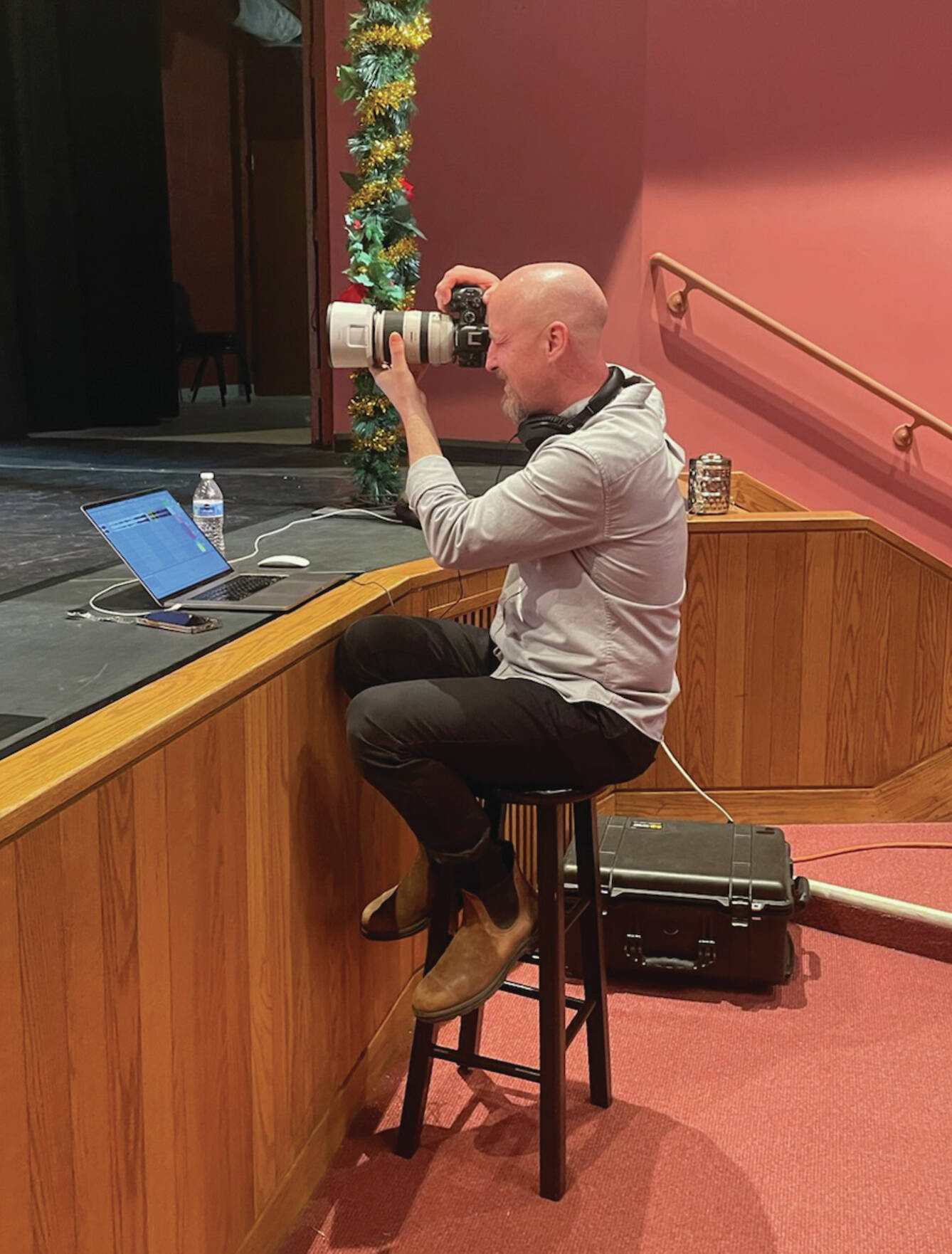Preparing for Homer’s “Nutcracker” production takes substantial community volunteer effort from the youth dancers, various dimensions of technical crew, costume design and preparation, general youth organizing and room assembly. This year will be the 36th year of the production. This year there are about 80 cast members and 60 crew contributing to the performance.
Christopher Kincaid and his family have contributed to the Homer “Nutcracker” production for three years. This year, Kincaid and his son Ames are responsible for sound and sound editing. As he has in the past three productions, Kincaid is also contributing to dance photography. His wife, Rachel, is providing primary stage direction and the family girls Isaiah, Honor and Haddie, all have dance roles.
The family relocated to Homer from Charlotte, North Carolina, when Kincaid joined Homer’s Church on the Rock as the pastor in March 2020.
At the time of the move, Kincaid was coming to a crossroad with his career and Rachel had just finished her doctorate in nursing.
Kincaid explained how the family first came up to explore Homer surroundings and how different it would be from life in Charlotte. He said the first things he noticed were the natural landscape, noting the mountainscapes across the inlet and the sunrise.
He attended a service on his first visit here and thought about what he would need to do to convince his children that this was the place to move to.
“The first person I referred to was my dad and he said, ‘If you don’t do it, you’re going to regret it. This will be an amazing experience for your family’,” Kincaid said.
Kincaid says he has been an audio and computer engineer since about 2004. He can transform sound details very quickly. He told dance director Rhoslyn Anderson and Sally Oberstein, general director, that he could provide whatever they need for sound as quickly as they needed it.
He has integrated all kinds of features into the performance soundtrack — adding additional time and music phrases when necessary or integrating external details such as the sound of a doorbell in the opening party scene.
“I’m basically hacking big portions out of songs, and then putting them back together, stitching them back together so they sound like they haven’t been touched, depending on what the directors ask for,” he said.
He provided an example for the popular battle scene.
“The battle needed a spot where the soldiers come in. Corey Deysbeek, director for that feature, asked, ‘Can we put a drum sound in there?’. I said, ‘Of course!’
“So, we added a little snare drum in there. I actually found a sample and then elongated it so it fits over the actual beat of the song. And then at the end of the song, we needed a way to kind of lift everything. So I created a snare quartet, where we got several different drummers. But it’s all created within the computer,” he said.
Anderson said, Kincaid is efficient at adding, removing and splicing music.
“He does it on the spot and provides instant results. He is ready and willing to make adjustments to match the vision of numerous choreographers.”
By observation from the stage, he contributes quickly and casually to all of the music and sound components of the production, humming along to whatever tune is happening onstage and picking up his camera in every spare moment to capture photos of the dancers onstage.


